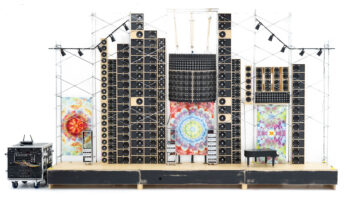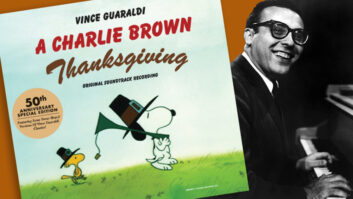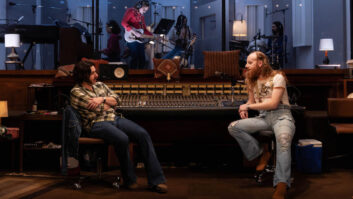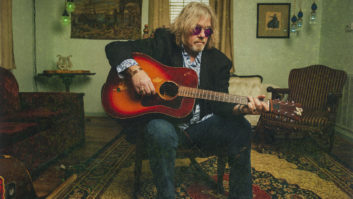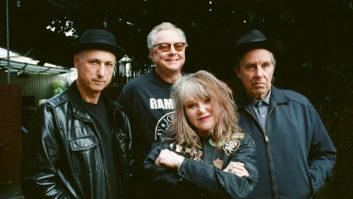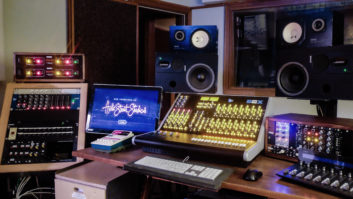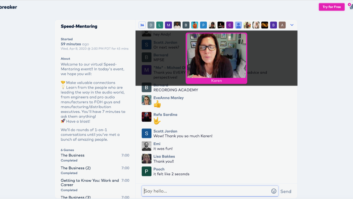From Mix, October 1998
San Francisco Recording, 1970-1984
By Maureen Droney
Short lives, long influences: That’s what these two seminal San Francisco studios had in common. From 1968 to 1980, Wally Heider Recording rocked with the likes of the Grateful Dead, the Jefferson Airplane, Sly & the Family Stone, the Pointer Sisters and Crosby, Stills & Nash—a veritable who’s who of the bands that came to fame in the Summer of Love, at Woodstock and beyond. In 1978, The Automatt picked up the torch, and, until it closed at the end of 1984, hosted a glorious amalgam of funk and rock from Santana, Journey, Jefferson Starship and Huey Lewis & The News to Con Funk Shun, The Whispers, Herbie Hancock and Frankie Beverly & Maze. At both of these studios, it was truly the best of times. Following are a few reminiscences from those who were there.
David Fraser
Platinum engineer (Whitney Houston, Mariah Carey, Aretha Franklin); night desk, maintenance and assistant engineer, Wally Heider Recording
When I began working the night desk at Wally Heider’s, they handed me a sawed-off pool cue and showed me the location of the dope bust alarm. Heider’s was a musical oasis in the Tenderloin, located on a popular hooker corner and next to a methadone clinic. But inside, on the second floor, the live echo chambers resonated with the sounds of legendary artists cutting some classic tracks. Sixteen-track 2-inch was the media of choice, fed by a Quad 8 or an MCI and later, a Trident or Neve battleship. The atmosphere was festive, warm and wonderful, and there was always a sense that there was real musical adventure happening. In short, Captain Beefheart was comfortable at Heider’s.
Susan Skaggs
Owner of Different Fur Recording; traffic manager, Wally Heider Recording
I was hired at Wally Heider’s because I wore a black velvet blazer to the interview! With that in mind, how do I describe “The Heider Experience”? The first thought that comes to mind is fun…but it was so much more than that. It was a group of crazy professionals who knew they made a difference in the creative process of recording music. The technical maintenance staff had each room ready long before the session’s downbeat; the engineers came to life the minute they walked through the front door. Tom Gilder, our supervisor, had it made because no one needed supervising! I had the best job of all—booking four great rooms in a studio whose founder set the technical standard for future major recording studios.
Ginger Mews
Manager (Wally Heider Recording)
It’s funny how it happened in San Francisco. It really was pure chance—right time and right place—and most of us didn’t know anything about the recording business when we got into it. But the studios somehow turned into something very special because they took on the personality of the artists and the people who worked there—starting with Wally, of course. Music was Wally’s passion. He’d played saxophone in a big band, but, in his own words, he was such a bad player that they kept making him turn away from the mic, so he got into recording instead. The staff both loved him and feared him because he was a perfectionist and he also had a temper. It wasn’t uncommon for him to fire people and then rehire them in the same day. Wally had a special talent for really listening to what the recording artists wanted, and he was willing to do whatever it took to comply with their wishes.
Ken Kessie
Platinum engineer (En Vogue, Tony Toni Toné, Celine Dion); staff engineer, The Automatt
The Automatt was originally a one-room operation run by busy producer David Rubinson (Herbie Hancock, Santana, the Pointer Sisters). This guy, for months, was doing two sessions a day—one in Los Angeles, one in San Francisco! He needed his own studio badly and ended up taking over one room of three in the CBS Studios on Folsom at 4th in San Fran.
The talent list generated by The Automatt, and still influencing the business today, is simply amazing. Current hit producers/label execs David Kahne, Mitchell Froom, Randy Jackson and Howie Klein prowled the halls. Drummer/producer Narada Michael Walden cut smokin’ live R&B tracks for Sister Sledge, Whitney Houston and Aretha Franklin. My fellow staff engineers David Fraser, Leslie Ann Jones, Maureen Droney, Michael Rosen and John Nowland have gone on to Gold and Platinum. Jeffrey Cohen is one of the most successful jingle producers in the country, and legendary engineering guru Fred Catero still shows the rest of us how it’s done. Studio owners and management types Susan Skaggs, Janice Lee (Tarpan), Michelle Zarin (Record Plant, Record One) run their various commands with grace and style. Vince Casper is the Saul Zaentz Film Center’s resident technical heavyweight.
I’ll never forget Leslie Ann Jones giving me a tongue lashing for opening my mouth improperly at a session (I was the greenest of seconds at the time), or watching Rubinson hold the phone three feet away from his ears as a drug-crazed artist screamed at him about some useless detail. Or, how the whole crew pitched in and drained the double-paned studio window when it filled one day with water from a leaking roof—finishing before the producer ended his phone call. Or Fred Catero getting a 30-piece session rolling in 45 minutes, live-to-2-track, with mixes better than many get today after 12 hours of “getting sounds.”
When The Automatt closed, everybody was devastated. We’d always joked that the property would make more money as a parking lot, and a parking lot it is today.
Leslie Ann Jones
Scoring manager/mixer (Skywalker Sound); staff engineer, The Automatt
I’m still affected by my years at the Automatt—what I learned there, not only as an engineer but about life in general. I gained a lot of my knowledge about being a producer from David, a lot of my love for R&B and for jazz, and in a lot of ways the integrity that I’ve tried to maintain in my work comes from that experience of working with David and Fred…and, of course, my knowledge of wine came from David!
There’s a lot that’s stuck with me. Where else could you have gone where there were six engineers working and three of them were women? It’s still unheard of, and the funny thing is, I don’t think that David even really thought about that. You see, the integrity and vibe came from the top down.
